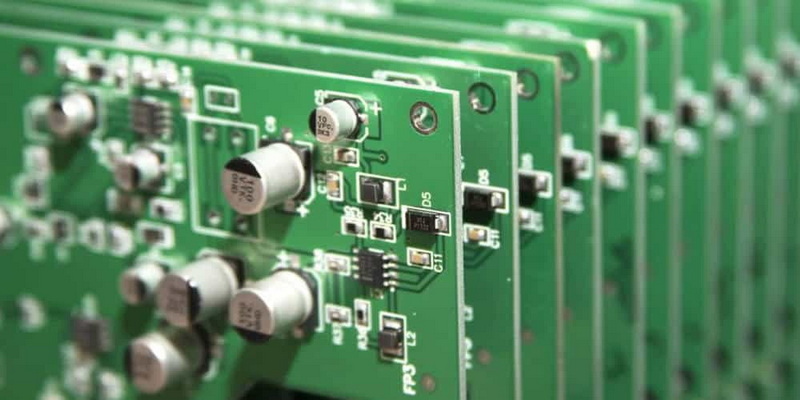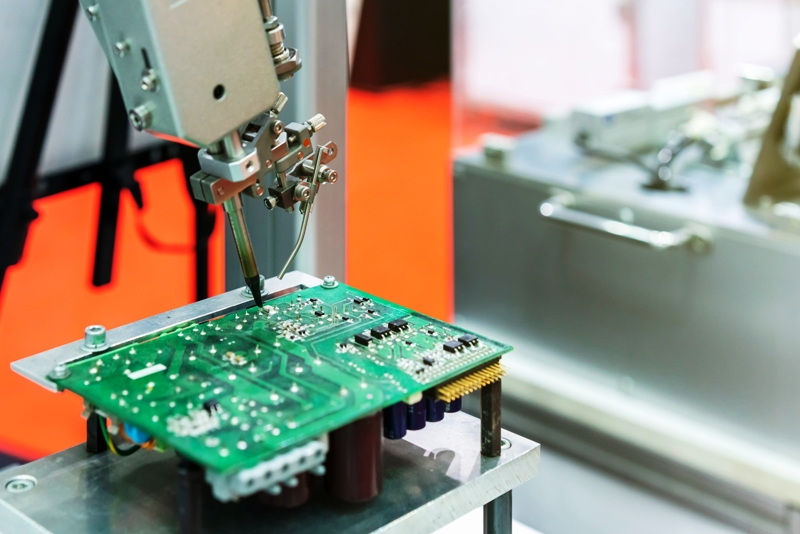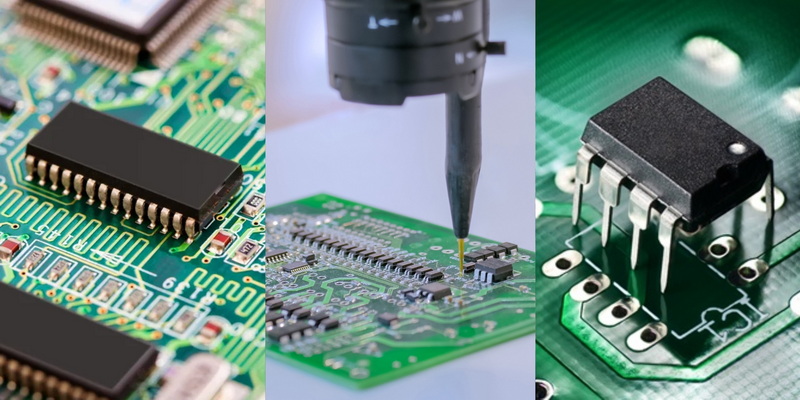Content Menu
● What Is an SMD Automatic Pick and Place Machine?
● Key Components of an SMD Automatic Pick and Place Machine
● How Does an SMD Automatic Pick and Place Machine Work?
>> 1. Component Feeding
>> 2. Component Recognition and Alignment
>> 3. Picking Up Components
>> 4. Placement on PCB
>> 5. Placement Verification
>> 6. Repeating the Process
>> 7. Post-Placement Soldering
● Advantages of Using SMD Automatic Pick and Place Machines
● Types of SMD Pick and Place Machines
● Technological Features in Modern SMD Pick and Place Machines
● Maintenance and Calibration of SMD Pick and Place Machines
● Future Trends in SMD Automatic Pick and Place Machines
● Conclusion
● FAQ
>> 1. What is the primary function of an SMD automatic pick and place machine?
>> 2. How do pick and place machines ensure accurate component placement?
>> 3. Can SMD pick and place machines handle different component sizes?
>> 4. What are the advantages of using automatic pick and place machines over manual placement?
>> 5. Are SMD pick and place machines easy to operate for beginners?
Surface Mount Device (SMD) automatic pick and place machines are essential in modern electronics manufacturing, enabling the rapid, precise, and automated placement of electronic components onto printed circuit boards (PCBs). This article provides an in-depth explanation of how these machines operate, their components, advantages, and the technology behind them.

What Is an SMD Automatic Pick and Place Machine?
An SMD automatic pick and place machine is a specialized robotic system used in the Surface Mount Technology (SMT) process to place surface-mount components such as resistors, capacitors, integrated circuits (ICs), and connectors onto PCBs with high accuracy and speed. These machines are integral to electronic device assembly, improving production efficiency and consistency while minimizing human error.
The evolution of electronics manufacturing has been closely tied to the development of these machines. Before their advent, manual placement of components was time-consuming, prone to errors, and limited in throughput. The SMD automatic pick and place machine revolutionized the industry by automating this critical step, enabling the mass production of complex electronic devices such as smartphones, computers, and automotive electronics.
Key Components of an SMD Automatic Pick and Place Machine
Understanding how an SMD automatic pick and place machine works requires familiarity with its main components:
- Pick-and-Place Head (Robotic Arm): The core component that picks up components from feeders and places them on the PCB. It often uses vacuum suction nozzles or grippers to handle parts delicately. Some machines feature multiple heads or multi-nozzle systems to increase throughput by placing several components simultaneously.
- Feeders: These hold components in tape, tray, or bulk form and supply them to the pick-and-place head. Tape feeders are the most common, where components are embedded in carrier tape with cover tape that the machine peels away as it picks components.
- Vision System: Cameras and sensors that recognize component positions, orientations, and PCB locations to guide precise placement. Modern vision systems use high-resolution cameras and sophisticated image processing algorithms to detect component presence, orientation, and even defects.
- Control Software: Programs that control the machine's movements, component identification, and placement sequence, often integrating CAD data for exact coordinates. This software allows operators to program the machine for different PCB designs and component types.
- Conveyor System: Moves PCBs through the machine for sequential component placement. The conveyor ensures smooth and continuous flow of boards, coordinating with the pick-and-place operations for optimal speed.
- Solder Paste Inspection (SPI) and Post-Placement Inspection (AOI): Though not always integrated into the pick-and-place machine, these inspection systems work closely with it to ensure solder paste quality before placement and verify component placement accuracy afterward.
How Does an SMD Automatic Pick and Place Machine Work?
The operation of an SMD automatic pick and place machine can be broken down into several detailed steps:
1. Component Feeding
The process begins with components loaded into feeders. These feeders present the components in a consistent and accessible manner for the pick-and-place head. Components may be supplied in tape reels, trays, or bulk packaging depending on their type and size.
Tape feeders are especially popular because they allow for continuous feeding of small components embedded in carrier tape. The machine automatically advances the tape, peeling off the cover tape to expose components for pickup. Tray feeders are used for larger or more delicate components, while bulk feeders handle loose parts.
2. Component Recognition and Alignment
The pick-and-place machine uses its vision system to capture images of components in the feeders. Advanced algorithms analyze these images to determine each component's position, orientation, and dimensions. This ensures the machine picks the component correctly and orients it properly for placement on the PCB.
The vision system also scans fiducial marks on the PCB, which are reference points used to calibrate the machine's coordinate system. This step compensates for any slight misalignment or distortion of the PCB during handling, ensuring that components are placed exactly where they should be.
3. Picking Up Components
Using vacuum nozzles or grippers, the pick-and-place head picks up components from the feeders. The vacuum suction is carefully controlled to avoid damaging sensitive parts. Some machines have multiple heads, allowing them to pick several components simultaneously, increasing throughput.
The nozzles can be changed automatically or manually to suit different component sizes and shapes. For example, a fine-pitch IC might require a small, precise nozzle, while a larger connector might need a wider suction cup or a mechanical gripper.
4. Placement on PCB
The machine moves the pick-and-place head to the exact coordinates on the PCB as defined by the design files (often imported from CAD software). The vision system may take additional images during placement to verify the position and orientation of the component. Components are placed onto solder paste applied to the PCB pads, ready for soldering.
The placement is performed with micrometer-level precision, which is critical for modern electronics where components have very fine pitches and tight spacing. The machine's motion control system uses high-precision motors and encoders to achieve this accuracy.
5. Placement Verification
After placing each component, many machines use vision systems to verify correct placement, detecting misalignments or defects in real-time. This feedback loop helps maintain high-quality assembly standards.
If a component is detected as misplaced or missing, the machine can either attempt to correct the placement or flag the PCB for rework. This reduces the number of defective boards proceeding to soldering, saving time and cost.
6. Repeating the Process
The machine repeats these steps for every component on the PCB, working either sequentially or simultaneously depending on its design and capabilities. High-end machines can place up to 100,000 components per hour with micrometer-level precision.
The software optimizes the placement sequence to minimize head movement and maximize speed. It also manages component changeovers, nozzle swaps, and feeder replenishment to maintain continuous operation.
7. Post-Placement Soldering
Once all components are placed, the PCB typically moves to a reflow oven where solder paste melts, creating permanent electrical and mechanical connections between components and the PCB.
The quality of the solder joints depends heavily on the accuracy of the pick-and-place operation, making the machine's precision and reliability crucial.

Advantages of Using SMD Automatic Pick and Place Machines
The use of SMD automatic pick and place machines brings numerous benefits to electronics manufacturing:
- High Precision: Vision systems and advanced controls enable placement accuracy within a few micrometers, essential for fine-pitch and miniature components. This precision is impossible to achieve consistently with manual placement.
- Speed and Efficiency: Automation drastically increases throughput, handling thousands of components per hour compared to manual placement. This speed is vital for meeting the demands of mass production.
- Consistency and Quality: Automated placement reduces human error, ensuring consistent assembly quality across large production volumes. This consistency leads to fewer defects and higher product reliability.
- Flexibility: Machines can handle a wide range of component sizes and types, from tiny 0201 resistors to larger connectors. This flexibility allows manufacturers to produce diverse products on the same equipment.
- Cost Savings: Reduced labor costs and fewer defects lower overall production expenses. Additionally, automation allows for 24/7 operation, increasing factory utilization.
- Data Integration and Traceability: Modern machines record placement data, enabling traceability and quality control throughout the manufacturing process.
Types of SMD Pick and Place Machines
| Type | Description | Use Case |
| Manual Pick and Place | Operator manually picks and places components using simple tools like suction wands. | Prototyping, small-scale assembly |
| Semi-Automatic | Combines manual operation with computerized assistance for better accuracy and visualization. | Small to medium production runs |
| Fully Automatic | Fully robotic with vision systems, multiple heads, and software control for high-speed assembly. | High-volume mass production |
| Desktop Pick and Place | Compact automatic machines suitable for small-scale or prototype assembly. | Hobbyists, small businesses |
Each type serves a different purpose depending on production volume, budget, and complexity of the PCB assembly.
Technological Features in Modern SMD Pick and Place Machines
Modern SMD automatic pick and place machines incorporate a variety of advanced technologies to improve performance:
- Vision-Guided Placement: Cameras capture component and PCB images to guide placement with high precision. Some systems use 3D vision to measure component height and ensure proper seating.
- Multi-Head Systems: Multiple placement heads work simultaneously to increase speed and efficiency. Some machines have up to 32 heads operating in parallel.
- Software Integration: Machines integrate with PCB design software (e.g., ORCAD, Altium Designer) to import component coordinates and placement instructions directly. This reduces programming time and errors.
- Real-Time Quality Control: Vision verification after placement ensures defects are caught immediately. Some systems include solder paste inspection (SPI) and automated optical inspection (AOI) for comprehensive quality assurance.
- User-Friendly Interfaces: Many machines offer intuitive software that simplifies programming and operation, even for less experienced users. Touchscreen controls, drag-and-drop programming, and simulation features are common.
- Automatic Nozzle Changers: To handle a wide variety of component sizes and types, machines can automatically switch nozzles without stopping production.
- Environmental Controls: Some machines include humidity and temperature controls to protect sensitive components during handling.
Maintenance and Calibration of SMD Pick and Place Machines
To maintain optimal performance, regular maintenance and calibration are essential:
- Nozzle Cleaning and Replacement: Nozzles can become clogged or worn, affecting suction and placement accuracy.
- Vision System Calibration: Cameras and sensors must be calibrated to ensure accurate recognition and positioning.
- Mechanical Checks: Bearings, motors, and conveyors require inspection and lubrication to prevent wear.
- Software Updates: Keeping the control software up to date ensures compatibility with new components and PCB designs.
Proper maintenance reduces downtime and extends the machine's lifespan, protecting the investment.
Future Trends in SMD Automatic Pick and Place Machines
The industry continues to innovate with features such as:
- Artificial Intelligence (AI): AI algorithms improve component recognition, defect detection, and process optimization.
- Collaborative Robots (Cobots): Integration of cobots allows safer human-machine collaboration on assembly lines.
- Increased Miniaturization: Machines are adapting to handle ever-smaller components with higher precision.
- IoT Connectivity: Machines connected to the Internet of Things (IoT) enable real-time monitoring, predictive maintenance, and data analytics.
- Flexible Manufacturing: Advanced machines support rapid changeovers and mixed-model production to meet diverse customer demands.
These trends aim to further increase efficiency, quality, and adaptability in electronics manufacturing.
Conclusion
SMD automatic pick and place machines are indispensable in modern electronics manufacturing, providing unmatched speed, precision, and efficiency in placing surface-mount components on PCBs. By combining advanced robotics, vision systems, and software control, these machines enable the production of complex electronic devices at scale while maintaining high quality and reducing human error. As technology advances, these machines continue to evolve, offering even greater capabilities and flexibility to meet the demands of the electronics industry.
Their role in the SMT process is not only to accelerate production but also to ensure the reliability and functionality of electronic products that power today's technology-driven world. Investing in state-of-the-art pick and place machines is crucial for manufacturers aiming to stay competitive and deliver high-quality electronics efficiently.

FAQ
1. What is the primary function of an SMD automatic pick and place machine?
The primary function is to pick up surface-mount components from feeders and accurately place them onto printed circuit boards (PCBs) during the assembly process.
2. How do pick and place machines ensure accurate component placement?
They use vision systems and sensors to recognize the position and orientation of components and PCB pads, guiding the pick-and-place head to place components precisely.
3. Can SMD pick and place machines handle different component sizes?
Yes, these machines can handle a wide range of component sizes, from tiny 0201 resistors to larger connectors, depending on the machine's design and tooling.
4. What are the advantages of using automatic pick and place machines over manual placement?
Automatic machines offer higher speed, precision, consistency, and reduced human error, making them more efficient and cost-effective for large-scale production.
5. Are SMD pick and place machines easy to operate for beginners?
Most modern machines feature user-friendly interfaces and automated component recognition, which help even less experienced users operate them effectively.




















